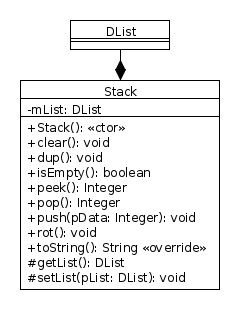Question
Below is the UML class diagram for the Stack class (storing Integers) provided in the lectures by the instructor. The dup() method is supposed to
Below is the UML class diagram for the Stack class (storing Integers) provided in the lectures by the instructor. The dup() method is supposed to duplicate the top item on the stack. For example, Stack s = new Stack(); s.push(1); // s contains 1 s.push(2); // s contains 2, 1 s.push(3); // s contains 3, 2, 1 s.dup(); // s contains 3, 3, 2, 1 Implement dup(). You may assume that dup() will not be called on an empty stack.

2)
Continuing. The rot() method performs a "rotation" of the top three items the stack. For example,
Stacks = new Stack(); s.push(1); // s contains 1 s.push(2); // s contains 2, 1 s.push(3); // s contains 3, 2, 1 s.push(4); // s contains 4, 3, 2, 1 s.rot(); // s contains 3, 2, 4, 1
That is, after a rotation, the top item on the stack is the item that was below the top item, the second item is the item that was below the second item, and the third item is the item that was previously on top of the stack. For this question, implement rot(). You may assume that rot() will not be called on a stack with fewer than three elements.
DList Stack mList: DList + Stack): ctor +clear0: void +dup): void +isEmpty): boolear +peek): Integer +pop0: Integer +push(pD ata: Integer): void +rot): void +toString): String override #getLi st(): DList #setList(pList DList): voidStep by Step Solution
There are 3 Steps involved in it
Step: 1

Get Instant Access to Expert-Tailored Solutions
See step-by-step solutions with expert insights and AI powered tools for academic success
Step: 2

Step: 3

Ace Your Homework with AI
Get the answers you need in no time with our AI-driven, step-by-step assistance
Get Started


